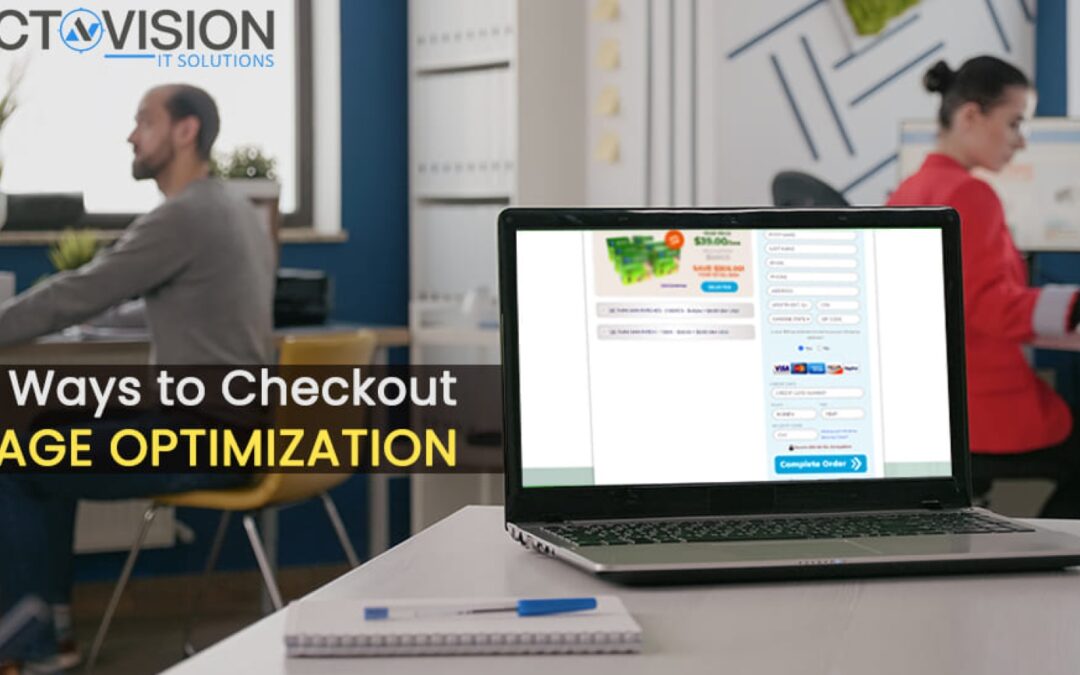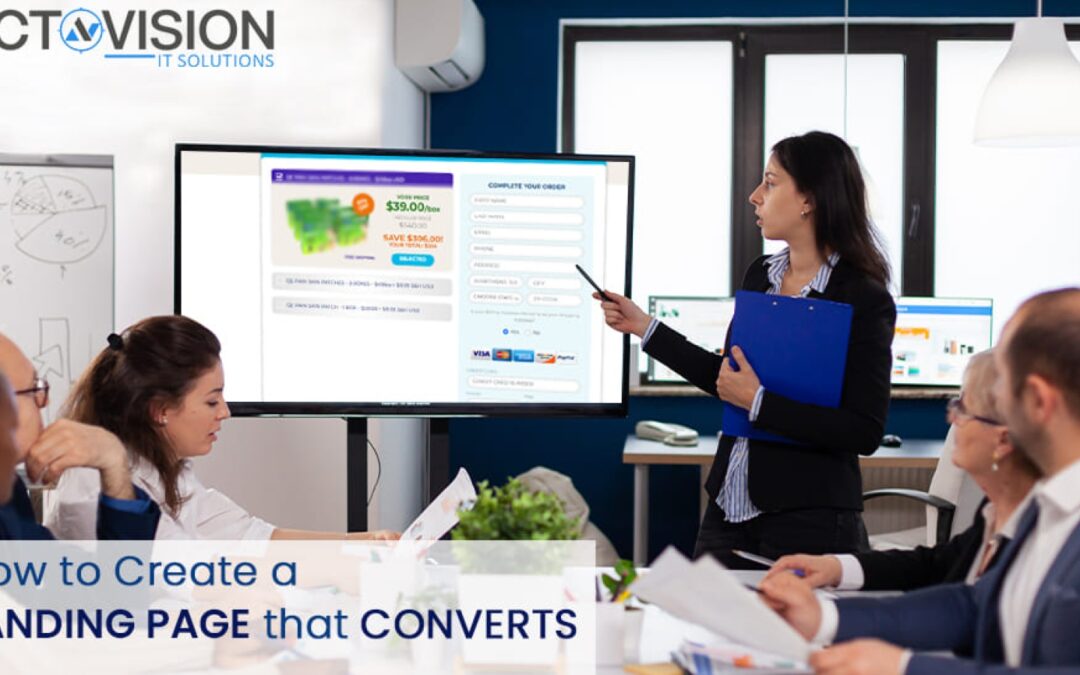
by actovision | Oct 22, 2022 | Checkout Page
In case you are losing customers on the checkout page and people are abandoning their carts during the checkout process, you need to optimize that page. The average cart abandonment rate is 70% and you as a business owner cannot afford to lose these people who are keen on purchasing but for some reason are leaving their carts.
Why aren’t they buying from us? Some of the primary reasons could be because there is the shipping fees, there are more upfront costs and other reasons which could make the customer drop off. So, what are the checkout page optimization that you can do? Learn more, only in this blog.
4 Ways You Can Optimize Your Checkout Page
Here are some of the ways you can optimize the checkout on your landing page.
- Use Urgency and the Fear of Missing Out
One of the marketing tactics that works like crazy is a fear of urgency and fear of missing out. If people believe a deal is about to run out or products are about to go off the shelf, they are more likely to decide and buy the products and services. One of the things you can do is offer a discount on the products in the cart. This may urge the customer to quickly make a decision.
- Try to Avoid Surprise Costs
Another aspect of checkout page optimization is that you try to avoid surprise costs. People hate, and they really hate you adding up hidden costs in the checkout process. If you cannot offer free shipping, all you need to do is mention that in the beginning and not at the end. Include it with the proper cost of the product so that the user does not get surprised with hidden costs.
Always include multiple payment options, like UPI, credit card, debit card, etc. People abandon carts when they cannot find a payment option to suit their purposes. So, to change that, you need to include many payment options so that customers do not abandon their carts. Most people who pay online want an easy way to pay via mobile. Hence, give them the option that they require.
People do not like it when security issues take place. They hate to part with their credit or debit card information when they do not trust the website. Hence, it is necessary to add safety measures for the checkout page optimization.
Wrapping Up
Choose to perform checkout page optimization and increase the landing page’s ROI. You can reach out to Actovision for the creation of stellar landing pages that convert easily. We specialize in making high-converting landing pages that help with your business goals. Hurry up and reach out.

by actovision | Oct 17, 2022 | CRM, CRM Solutions, Funnel Optimisation
As a person in business, your bottom line should be to increase sales.
How can you do that?
Imagine your prospective customers as walking through certain stages before they make a decision to purchase something on your website or via your landing page. These stages, are typically known in marketing parlance as the AIDA or the Awareness, Interest, Desire and Action stages. These stages are envisioned as a funnel because of the number of potential customers “dropping-off” the funnel at each stage, with only a small number making it to the final stage or the Action stage. Hence at each stage you will require conversion funnel optimization, which is what we will discuss in this blog. Let’s delve deeper.
What is a Conversion Funnel?
A conversion funnel refers to a set of stages that a prospective buyer passes through before the ultimate goal of “converting” which is buying a product or taking some desired action.
The reason this buyer’s journey is called a conversion funnel, is because, it narrows as it progresses, creating a funnel shape, wide at the top and narrow at the bottom. At every stage of the funnel, people tend to drop-off, hence the funnel needs to be optimized at each stage, known as conversion funnel optimization.
How to Optimize the Conversion Funnel
For top of the funnel optimization, you need to bring in the right traffic to your landing page. Instead of junk traffic coming your way, try to target an audience that is actually likely to convert. So primarily, check for high-quality traffic. This will require a lot of analysis and keyword research.
Once you have targeted the right traffic to land on your site, you need to build trust with that traffic. The way to do this is to by posting case studies, testimonials, community forums and price comparisons. Once trust has been established, you can move on to the next part of the conversion funnel optimization process.
Once a lead has been converted you need to build a rapport with them over time. You have to keep them interested in your products, so you can use remarketing strategies and other tactics to promote future products to these customers who stick with you till the end of the sales process.
Conclusion
Actovision is a leading landing page creator and is involved in the conversion funnel optimization. We ensure that the landing pages we create for you are properly optimized at every stage of the sales funnel. In that way, our landing pages are highly successful in what they set out to do. So, hurry up and get in touch with us today for a consultation on creating the best landing pages.

by actovision | Oct 11, 2022 | CRM, CRM Solutions
Creating landing pages is certainly our speciality at Actovision. Over the years we have helped a host of clients achieve their business goals by creating landing pages with CRM API integration that helped to convert clients.
The function of a really good landing page is to help warm leads understand the importance of converting and becoming customers or clients. A well-designed landing page can help tilt customers into the sales funnel and attract them into making a buying decision.
Hence, let’s look at some of the details of how to create a landing page that converts.
Step 1: The Landing Page Should Have Only One Goal
Firstly, every landing page that has CRM API integration associated with it should have one and only one goal. The goal is to help the person landing on the page to take a decision about buying a product or availing of some service. Hence, the call-to-action button should ideally encompass only one function and one goal. A landing page with too many goals frightens off people.
Step 2: Decluttered Landing Pages
The next step is to create landing pages that are decluttered. Design landing pages that are free from too many elements is the key to getting users’ attention and helping them to convert. A simple design, with one call-to-action is sufficient for the people to understand what your landing page is all about.
Step 3: Add Testimonials
To add weight to your landing page, you will need to include a couple of testimonials from real people. This could mean putting in proof like social media accounts so that people believe that the product or service has worked well for someone else, and can work well for them.
Step 4: Choose the Right Colours
Moreover, whenever you create a landing page, design is a very important aspect. One of the important aspects is the colour combination. The colours should contrast each other and be soothing to the eye. Often in the aim to attract the eye, landing page designers should be careful of the colour palette that they use.
Step 5: CRM API Integration
There is no point in creating a landing page unless one can get a lot of information from it about one’s customers. To get client information, one should use a CRM and integrate it with the landing page. This way one can refine the creation of landing pages in future.
Conclusion
So, we can see that CRM API integration is an important aspect of the landing page creation. In these 5 steps you can create some of the best landing pages that really convert. In case you are looking for someone to help you create high converting landing pages, you can get in touch with Actovision. We will help you to create and manage some of the best sales pages for your requirements.



